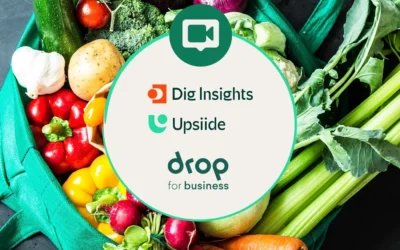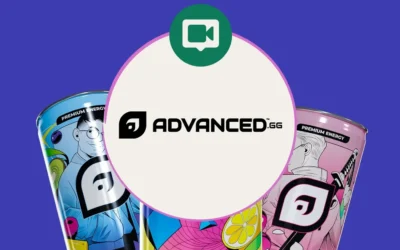
Challenge
Upsiide, our proprietary research platform, is used as Coca-Cola’s global gate zero testing protocol.
For a recent project for Coca-Cola centred around coffee innovation, the Global Director of Human Insights wanted to spearhead a new approach to innovation sprints. This was in order to get to the best innovation ideas and empower all 4 business units involved (USA, UK, Japan, and China) with marching orders.
Solution
Coca-Cola set up a 3-day innovation workshop in Japan with marketing, research, SRA, and even finance stakeholders from all 4 regional business units. Upsiide was used as a way of pre-testing existing ideas before stepping into the workshop AND testing all of the ideas generated in the room.
Impact
A million dollar bar chart (we’ll explain more later), 7 innovations that out-performed the benchmark, and clear decisions made about what to create within each of the 4 business units.

The Coca-Cola Company is one of the worlds most iconic beverage giants, with over 2.2 billion servings of their products enjoyed every day.
Building a Rigorous Innovation Testing Program
The Coca-Cola Company partnered with Dig Insights in 2021 to embed Upsiide, our proprietary research platform, as their gate zero protocol. Since then, Upsiide has been used by 168 global Coca-Cola users, with studies fielded in 44 countries, and over 22,000 ideas tested.
“Once we mandated it, people started buying in. Upsiide is fast, it’s cost-effective, and most importantly – we’ve got worldwide adoption because it just makes sense.”
Upsiide’s approach to innovation testing has allowed the Coca-Cola teams to make the right decisions quickly, and launch new products that they’re confident will be incremental to their existing offering.
“Everyone voted (including senior management) that Upsiide is our biggest success of the year. It was my best experience working with an agency, hands down.”
The Challenge
The Coca-Cola Company wanted to launch new RTD coffee innovations across four key markets: US, UK, Japan, and China. The Global Director of Human Insights, Billy Fletcher, wanted to spearhead a new approach to nailing their innovation pipeline. This was in order to get to the best innovation ideas per region, and empower all 4 business units involved (USA, UK, Japan, and China) with marching orders.
Previously innovation pipelines had been siloed by region, which was a problem for the Coca-Cola crew.
“The problem with focusing on local innovation as opposed to global innovation is that a smaller, local idea might only get you to 1 million dollars. We don’t get out of bed for less than 1 billion dollars.
It cost about a million dollars to put on an in-person workshop in Tokyo – 40 decision-makers flying to Tokyo for an innovation sprint becomes well worth it at that price tag.”
The Solution
The workshop happened in-person in Tokyo with marketing, research, SRA, finance, and legal stakeholders from all 4 countries.
Before the workshop even began, all of the pre-existing ideas – those ones that many stakeholders had a sweet spot for – were tested. If they didn’t meet the existing Coca-Cola benchmark for RTD coffee they were then set to the side. This step was crucial for Billy:
“I personally feel it’s critical to get people’s pre-baked ideas out of the way, it helps them engage in the ideation. I showed them how their ideas fared in the first hour of the first day (ahem, they didn’t do well), so they could let them go.”
Workshop details:
Day 1
Focused on reviewing existing category research and inspiring new ways of thinking about the white space.
Day 2
Was all about generating net new ideas to test, based on the exploratory work from the day before. On day 2 the teams landed on 34 ideas to test in all 4 markets.
Overnight the Dig team used Upsiide to test each of these ideas against one another and the existing benchmark for RTD coffee beverages. Including their benchmark in the overnight research afforded the team confidence in the potential of the ideas.
Day 3
When the team walked into day 3, the final day of the workshop, they had region-specific research at their fingertips.
And that’s where the million dollar bar chart comes in…
The Outcome
“Instead of wasting another 6 months of productivity, which would have cost us a million dollars, we saved 6 months of back and forth.
And stakeholders saw $$$ in their eyeballs. You’re only as good as the decisions that get made. As an insights person, I was able to add so much value to the business and insert myself into the most important strategic innovation decisions.”
On day 3, the Coca-Cola teams were able to clearly visualize which of the ideas outperformed their existing benchmark (shown in blue below). There were 7 ideas that were clear winners to take into the next stage of development, representing millions in innovation potential.

A particularly powerful aspect of the overnight testing was the team’s decision to test all 34 ideas in all 4 regions. This allowed the group to see which ideas should be prioritized in which regions as well as which made sense to prioritize globally. Below, see a blinded snapshot of those ideas that were prioritized in each region.
“I ran the research in 4 countries overnight. I went to bed, woke up in the morning, and over a bowl of ramen I put together our global options.
Day 3 became, ‘we have the results. let’s sit down and have a conversation about which regions are going to take which ideas and why. Those charters should be global ideas because that’s where billion dollar ideas come from.'”

Related Posts
Whether you’ve got a specific project in mind, or you’d like to learn more – we’d love to hear from you.


